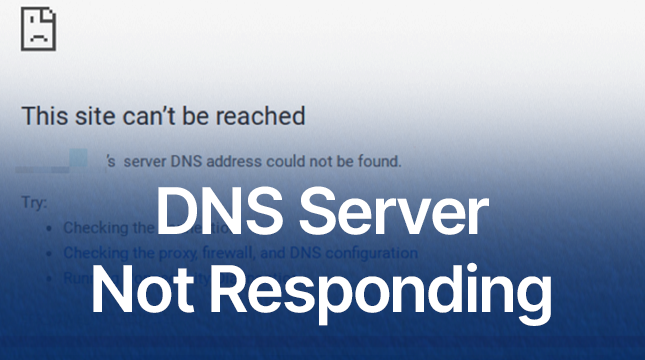This website uses cookies so that we can provide you with the best user experience possible. Cookie information is stored in your browser and performs functions such as recognising you when you return to our website and helping our team to understand which sections of the website you find most interesting and useful.
What Must an Entrepreneur Do After Creating a Business Plan?

Congratulations! You’ve poured your heart and soul into crafting a stellar business plan. It outlines your vision, your strategy, and your roadmap to success. But the journey has just begun. Now it’s time to transform that blueprint into a thriving business. So, what are the next crucial steps you need to take?
Building Your Business Foundation
Think of your business plan as the architectural drawings for your dream house. Now it’s time to gather the materials (your team) and secure the permits (legal structure) before you can break ground.
Assemble Your Dream Team: Hire the Right People
Your team is the backbone of your organization. Don’t underestimate the importance of hiring the right people who share your vision and possess the skills to make it happen.
-
Identify Key Roles and Skills: Start by outlining the critical roles you need to fill. Do you need marketing whizzes, tech wizards, or customer service superstars? Identify the specific skills and experience required for each role.
-
Attract Top Talent: Recruit with a Vision: Crafting a compelling job description that showcases your company culture and mission is key to attracting top talent. Don’t just list responsibilities – paint a picture of the exciting journey you’re embarking on, and how the ideal candidate will play a pivotal role.
-
Foster Collaboration: Build a Team Culture: Building a strong team culture is essential for fostering collaboration, creativity, and employee satisfaction. Invest in team-building activities, encourage open communication, and create a work environment where everyone feels valued and heard.
Solidify Your Legal Structure
Every business needs a legal foundation. Choosing the right business entity – sole proprietorship, partnership, LLC, or corporation – has tax and liability implications. Consult with a lawyer or accountant to determine the best structure for your specific needs.
-
Choose the Right Business Entity: The legal structure you choose will impact your taxes, liability, and fundraising options. Consider factors like the number of owners, desired level of personal liability protection, and growth plans when making this decision.
-
Obtain Necessary Permits and Licenses: Depending on your industry and location, you might need specific permits and licenses to operate legally. Research the requirements for your business and ensure you have everything in place before launch.
Secure Funding: Fueling Your Growth
Unless you’re bootstrapping your business entirely, securing funding will be crucial. There are several options to consider, each with its own advantages and drawbacks.
-
Explore Funding Options: Loans, grants, or investors? Each option comes with its own set of criteria and requirements. Consider your business model, future growth plans, and your comfort level with debt or equity partnerships. You can also make use of a business loan calculator to ensure you know what to expect.
Branding and Marketing: Getting Your Name Out There
With your team assembled and legal ducks in a row, it’s time to build your brand and develop a marketing strategy to attract customers.
Develop a Memorable Brand Identity
Your brand is more than just a logo; it’s the essence of your company, the story you tell, and the emotions you evoke.
-
Craft a Powerful Brand Story: What makes your company unique? What problem are you solving, or what need are you fulfilling? Develop a compelling brand story that resonates with your target audience.
-
Design a Distinctive Logo and Visual Identity: Your logo and visual identity are the visual representation of your brand. Invest in creating a logo that is memorable, reflects your brand personality, and looks good across various platforms.
Create a Winning Marketing Strategy
Having a fantastic product or service is only half the battle. You need a strategic plan to reach your target audience and convert them into paying customers.
-
Identify Your Target Audience: Who Are You Selling To? Understanding your ideal customer is critical for crafting targeted marketing messages. Consider demographics, interests, pain points, and online behavior to create a detailed buyer persona.
-
Develop Engaging Content: Speak Your Customer’s Language: Content marketing is a powerful tool to educate, engage, and build trust with your audience. Create informative and engaging content that addresses your target audience’s needs and interests.
-
Leverage the Power of Digital Marketing: Social Media, SEO, and More: The digital landscape offers a vast array of marketing channels to reach your target audience. Utilize social media platforms, search engine optimization (SEO) strategies, and other digital marketing tactics to drive brand awareness and attract customers.
Launching Your Business with a Bang
The launch of your business is an exciting milestone. Here’s how to ensure a successful debut.
Prepare for Launch Day: The Final Countdown
A successful launch requires careful planning and preparation.
-
Soft Launch or Big Bang? Choosing Your Strategy: Decide whether a quiet soft launch or a splashy grand opening is best for your business. Consider factors like your target market, budget, and the level of buzz you want to generate.
-
Pre-Launch Marketing Blitz: Generate Buzz: Create a pre-launch marketing campaign to generate excitement and anticipation for your business. Utilize social media, email marketing, and influencer outreach to spread the word.
The Grand Opening (or Soft Debut): Making a Splash
Whether you’re opting for a grand opening or a soft launch, make sure your debut creates a positive and memorable impression.
Measuring Success and Adapting for Growth
Launching your business is just the beginning. The key to long-term success lies in measuring your progress and adapting your strategy based on the data.
Tracking Key Performance Indicators (KPIs)
Identify key performance indicators (KPIs) that align with your business goals. These metrics will help you track your progress and identify areas for improvement. Common KPIs include website traffic, conversion rates, customer acquisition costs, and customer lifetime value.
- Embrace Continuous Improvement: Analyzing and Adapting Your Strategy
Regularly analyze your marketing data and customer feedback. Use this information to identify what’s working and what’s not. Be prepared to adapt your strategy and tactics to optimize your results and ensure sustainable growth.
Conclusion: From Plan to Progress – Building a Thriving Business
Transforming your business plan into a thriving business requires dedication, hard work, and a willingness to adapt. By building a strong foundation, crafting a compelling brand, and implementing a data-driven marketing strategy, you’ll be well on your way to achieving your entrepreneurial dreams. Remember, the journey is just as important as the destination. Enjoy the process, embrace the challenges, and celebrate your milestones. The road to success is paved with action, so get out there and make it happen!

Let's Start Your Project
Get free consultation for your digital product idea to turn it into reality!
Get Started






